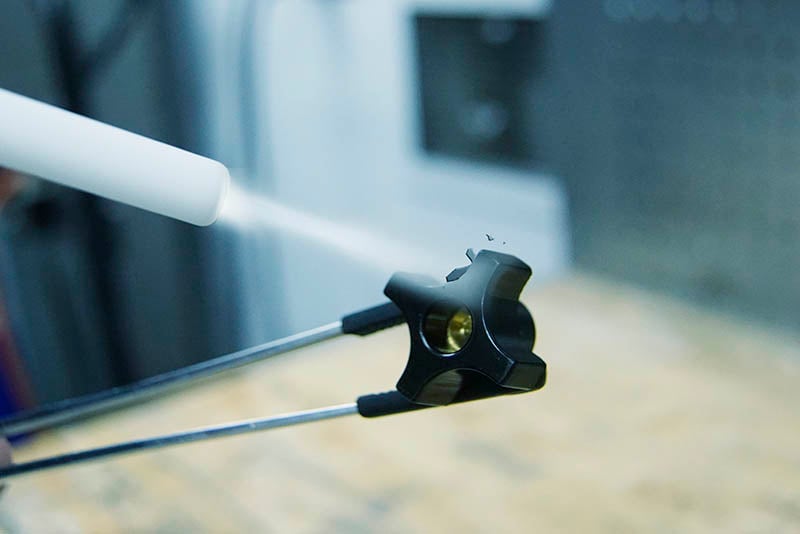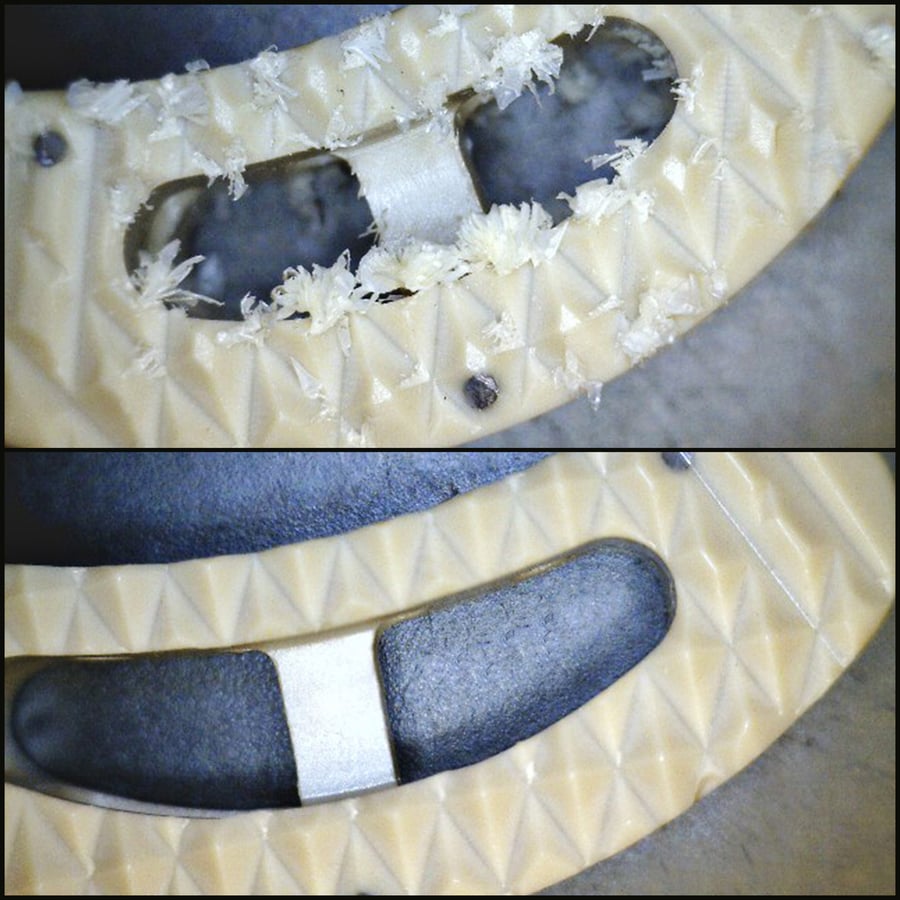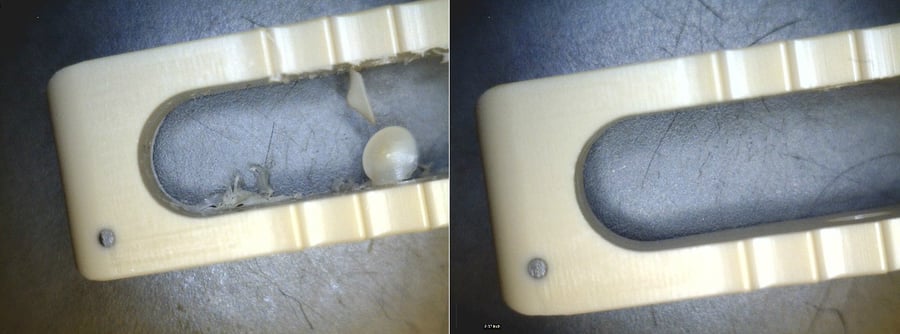
It is not uncommon for unwanted material to be left on a plastic part after machining or molding.
Burrs can be the result of numerous manufacturing processes: grinding, drilling, milling, turning, tapping, slotting, etc. They can manifest themselves in the forms of various types: roll-over, tear, flag and even poisson burrs.
It is essential to remove this unwanted material from the manufactured part without altering the dimensional tolerances or marring the surface. So when deflashing and deburring becomes necessary, a quality solution is also essential.
Whether in removing parting line flash or material burrs, traditional methods have often fallen short. These methods can be slow, involve human error and inconsistencies, cause grit entrapment, and cross contamination.
So what’s an effective solution?
Dry ice blasting ensures that the geometries of the finished part are maintained without the negative side effects of alternative methods.
The dry ice blasting process:
- Does not alter finished product geometries
- Eliminates cross contamination
- Is effective for removing all types of flash and burrs
- Reduces part finishing time and lowers costs
- Leads to consistent quality

Dry ice blasting doesn’t alter finished product geometries
Dry ice provides a strong, but gentle touch without causing damage to parts. On the Mohs Scale of Hardness, dry ice is close to the bottom (1.5 – 2 out of 10) and is therefore non-abrasive on most materials.
Dry ice successfully removes burrs from parts without altering the dimensional characteristics of the part nor damaging the surface.
When compared to batch (tumbling) deflashing/deburring processes, the dry ice blasting stream can be focused on just the specific area of the part that needs the excess material removed, which results in greater precision. Tumbling the entire part can cause damage in areas that didn’t even need to be addressed.
The gentle cleaning process is also used to clean molds, which results in extending the asset life of the mold far beyond what would be achieved with traditional cleaning methods such as chemicals or water. Cleaning tooling with dry ice eliminates the wear on the parting lines and shut-offs. Such unneeded wear eventually leads to part flash.
Dry ice blasting eliminates cross contamination
In many industries, cross contamination that can come from batch tumbling different parts in the same machine and the same media is a serious concern.
Once dry ice hits the surface that is being cleaned, it sublimates, or turns directly from a solid to a gas, upon impact, leaving no residue.
Dry ice blasting effectively removes various flash or burrs
Despite its gentle touch, dry ice effectively removes flash and burrs from a variety of surfaces. Dry ice has been successful on most plastics and some rubbers, especially thermoset polymers. It has also had effective results on Nylons, PEEKs, Polycarbonates, ABS, Acetals, Delrin, PPE, Turcite, Ryton, EPDM, and more.

Dry ice blasting reduces part finishing time and lowers costs
Dry ice blasting greatly improves the efficiency of manufacturers by reducing the amount of time spent removing burrs and flash and the associated costs. The process can quickly remove burrs and flashes, which is counter to manual deburring and deflashing that can take minutes per part.
Dry ice does not create secondary waste, further cutting cleaning time and downtime.
Dry ice blasting leads to consistent quality of finished parts
Removing sharp instruments from employee’s hands not only improves plant safety, but eliminates inconsistency that can come from manual cleaning. This is especially true if multiple people are involved in the parts finishing process. Dry ice blasting systems deliver a consistent flow of dry ice particles to remove flash and burrs in a repeatable fashion, regardless of who is operating the machine.
In summary
Dry ice has been proven to be an effective, quick method to deburr and deflash parts without causing damage to the part finish, cause media entrapment issues, or cross-contamination concerns. So instead of manual deburring or deflashing parts, or tumbling problematic parts, consider dry ice blasting. This process eliminates cross contamination, changes in part geometries, and secondary waste.
.png) English
English
